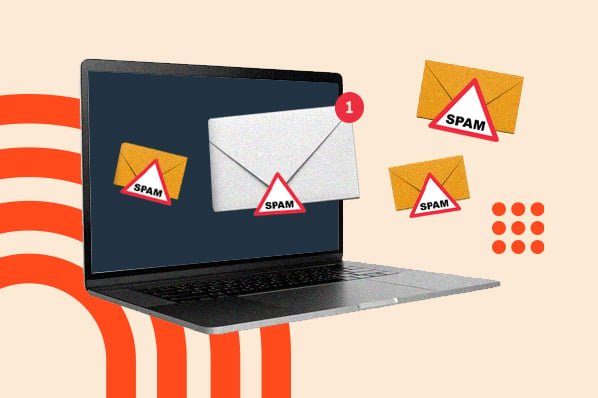Avoid the Spam Folder: Email Deliverability Secrets

▼ Summary
– Spam trigger words are terms historically used by filters to identify junk email, though modern filters now prioritize authentication, sender reputation, and engagement.
– Proper email authentication is mandatory and involves protocols like SPF, DKIM, DMARC, and BIMI to verify sender identity and improve deliverability.
– Maintaining a good sender reputation is critical, as mailbox providers track metrics like bounce rates, complaints, and engagement to determine inbox placement.
– High recipient engagement, such as opens, clicks, and replies, is a key signal to providers that emails are wanted and helps avoid the spam folder.
– Even compliant emails can be perceived as spam if they are irrelevant, excessive, or unwanted by recipients, emphasizing the importance of relevance and relationship-building.
Landing in the inbox instead of the spam folder remains one of the biggest challenges for email marketers today. While trigger words still play a role, modern deliverability relies on three core pillars: authentication protocols, sender reputation, and subscriber engagement. Getting these elements right ensures your messages reach the audience you worked so hard to build.
Back in the early 2000s, avoiding spam filters felt like cracking a secret code. I remember working with major brands like Hasbro, carefully scanning every email against a printed list of flagged phrases. Words like “free” or “buy now” came with spam scores, and exceeding a certain threshold could doom a campaign. It was tedious, but necessary, content was king when it came to filter decisions.
Today, the game has changed. While certain words can still raise eyebrows, email providers now prioritize technical and behavioral signals. They want to know you’re a legitimate sender, that people actually want your emails, and that you’re not trying to trick anyone. Let’s break down what really matters now.
The First Line of Defense: Authentication
Authentication is how you prove to email services that you are who you claim to be. Think of it as showing your ID before entering a secure building. There are four key protocols to understand:
- SPF (Sender Policy Framework): Tells receiving servers which IP addresses are allowed to send mail from your domain.
- DKIM (DomainKeys Identified Mail): Adds a digital signature to your emails, proving they weren’t altered in transit.
- DMARC (Domain-based Message Authentication, Reporting & Conformance): Builds on SPF and DKIM to tell receivers what to do with emails that fail authentication (e.g., quarantine or reject them) and provides you with reports.
- BIMI (Brand Indicators for Message Identification): Allows your company logo to appear in the inbox when your emails are authenticated, increasing brand recognition and trust.
Important Note: Setting these up requires DNS changes, so you may need help from your IT team. But skipping this step is like sending mail with no return address, it instantly erodes trust.
Managing Your Sender Reputation
Your sender reputation acts like a credit score for your domain. Internet service providers track how recipients interact with your emails. High bounce rates, spam complaints, or sending to inactive addresses can tank your reputation.
Monitoring Tools:
- Sender Score
- Google Postmaster Tools
- Microsoft SNDS
To maintain a healthy reputation:
- Warm up new IP addresses gradually instead of sending high volume immediately.
- Remove or suppress inactive subscribers, continuing to email disengaged audiences hurts deliverability.
- Honor unsubscribe requests quickly and make the process easy.
- Avoid purchased lists. Only email people who explicitly agreed to hear from you.
The Power of Engagement
Engagement is perhaps the most powerful signal today. If people open, click, reply, or forward your emails, providers interpret that as permission to keep delivering your messages. Low engagement tells them your content isn’t wanted.
Apple’s Mail Privacy Protection has made open rates less reliable, but they still offer directional insight. Focus on click-through rates, replies, and list growth as more accurate engagement metrics.
To improve engagement:
- Segment your audience and tailor content to different behaviors or interests.
- Clean your list regularly, suppressing those who haven’t engaged in months.
- Balance promotional emails with valuable content: tips, insights, or resources that benefit the reader even when they’re not ready to buy.
The Human Element: It’s About Trust, Not Just Technology
Even with permission and a perfect technical setup, emails can still be marked as spam if they feel irrelevant, repetitive, or self-centered.
A Cautionary Tale: I once consulted with a company whose customer service team used a script arguing why their emails weren’t spam, while angry customers hung up mid-call. The lesson? If it feels like spam to the recipient, it is spam.
Real-world examples illustrate this clearly:
- A phishing email pretending to be from a bank is clearly malicious.
- But a legitimate newsletter that talks only about the company’s achievements, with no reader benefit, can feel just as spammy.
- Sending too frequently, like one brand that emailed me 133 times in a month, trains subscribers to ignore or report you.
A Note on “Spammy” Words:
While certain words and phrases can still trigger filters, they’re no longer the primary concern. Modern spam detection looks at patterns, not individual terms. That said, it’s wise to use sales-heavy language (“free,” “discount,” “limited time,” “act now”) sparingly.
Conclusion
Ultimately, deliverability is about trust. It’s built through consistent value, respect for the subscriber’s attention, and a technically sound sending infrastructure. When you focus on sending emails that people actually want to receive, you not only avoid the spam folder, you build a stronger brand and a more responsive audience.
(Source: HubSpot Marketing Blog)





